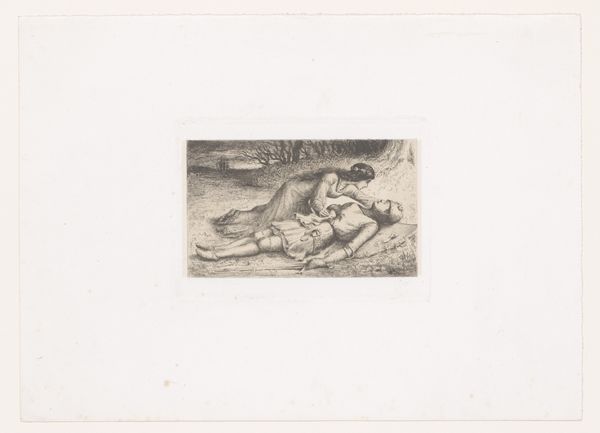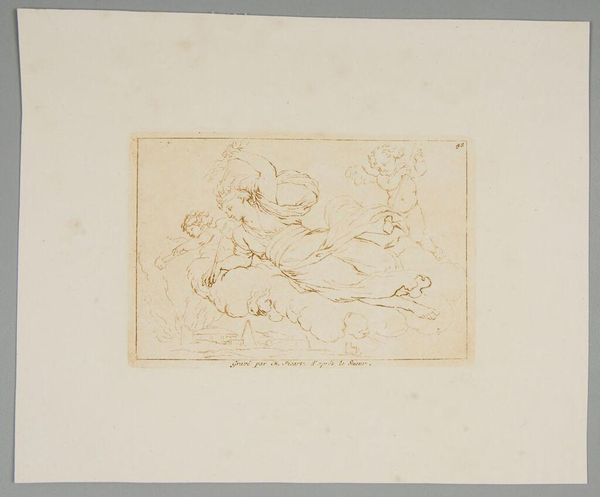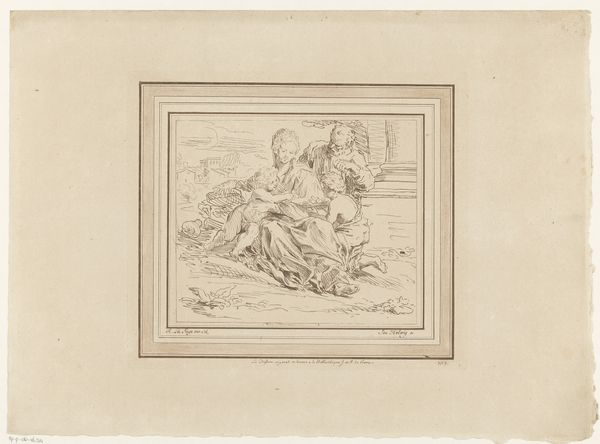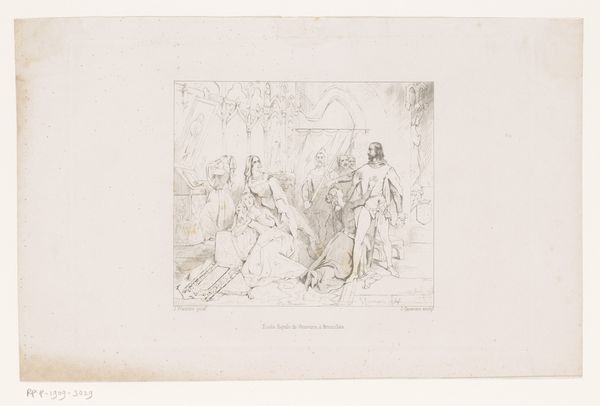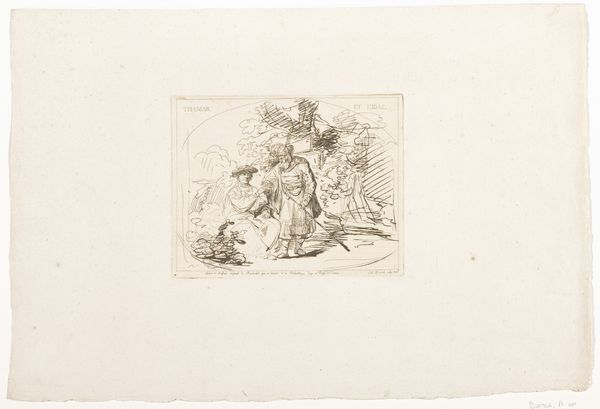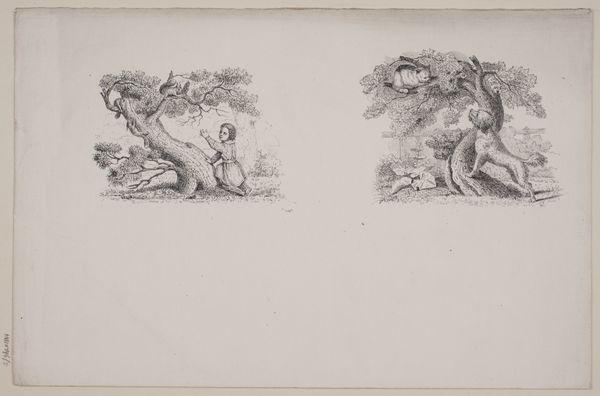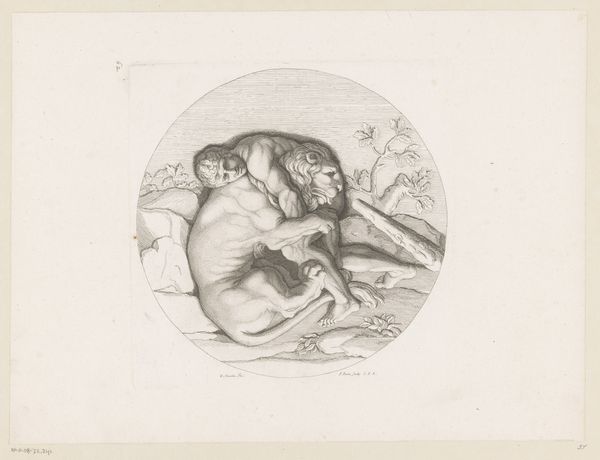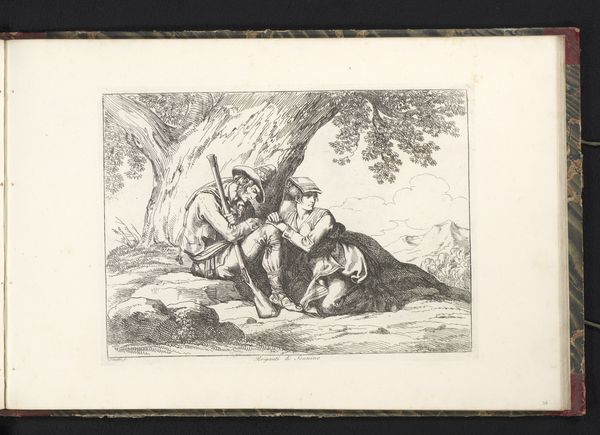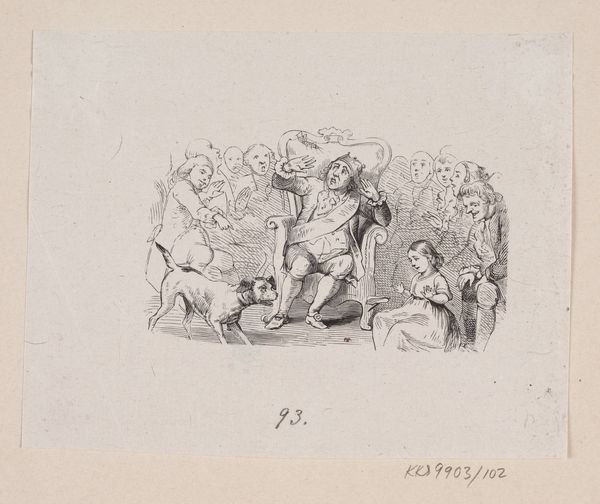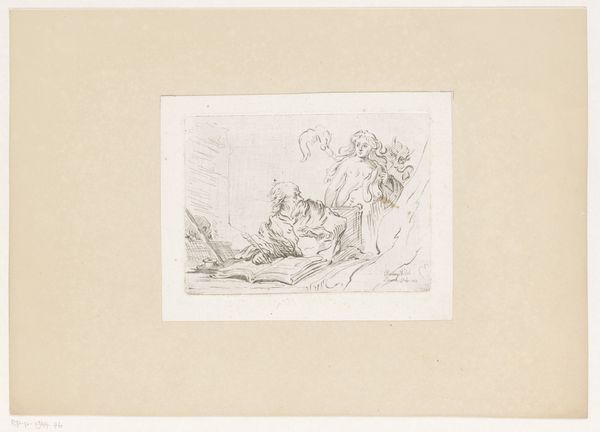
Dimensions: 118 mm (height) x 172 mm (width) (plademaal)
Editor: This artwork, created between 1769 and 1770 by J.F. Clemens, is called "Three Naked Boys Playing Music." It's an etching, made with ink, and strikes me as delicate, almost ethereal, in its rendering of these figures. What’s your take on it? Curator: From a materialist perspective, this piece prompts consideration of the printmaking process itself. The etching technique, the labor involved in its production, the dissemination of imagery through prints... Clemens wasn't just creating art, he was participating in a burgeoning visual economy. Consider also the availability of ink, paper, and tools—these are not neutral elements, but commodities within a specific historical and social context. How might the rise of printmaking impact the consumption and perception of art? Editor: That's fascinating! So, instead of just looking at the aesthetic qualities, we're thinking about how the materials and techniques used to create the art are tied to the society and economy of the time? Curator: Precisely. We should investigate the types of paper, the precise composition of the ink. These elements tell us about Clemens's access to resources and the broader manufacturing processes in 18th-century Denmark. Were these materials readily available, or were they luxury items, shaping the work’s accessibility? Editor: I never really thought about that! It makes you wonder who the audience for these prints were. Was it aimed at the wealthy, or was it part of a movement to democratize art through reproduction? Curator: Excellent question. The multiple allows us to ponder questions of ownership and distribution. Are these images meant for private contemplation, or public display? Do these copies challenge the notion of a single, original masterpiece? Editor: So much to consider! Thanks to your insights, I'm beginning to appreciate how looking closely at materials can tell a richer story than initially meets the eye. Curator: Exactly! Shifting focus to the "how" and "why" of its production can transform our understanding of the “what.” It brings us closer to the hands that made it, and the culture that consumed it.
Comments
No comments
Be the first to comment and join the conversation on the ultimate creative platform.
